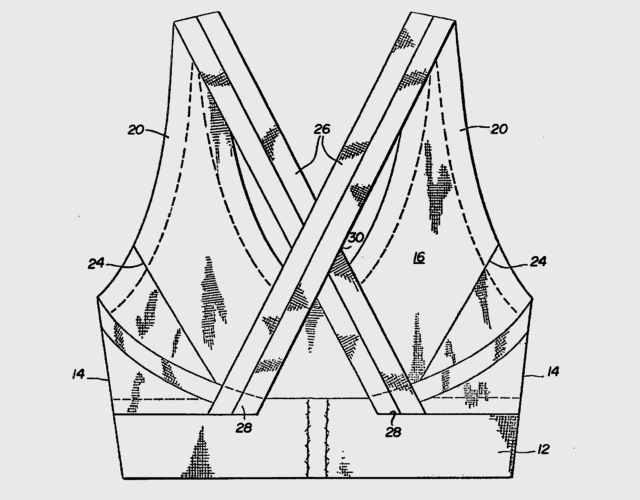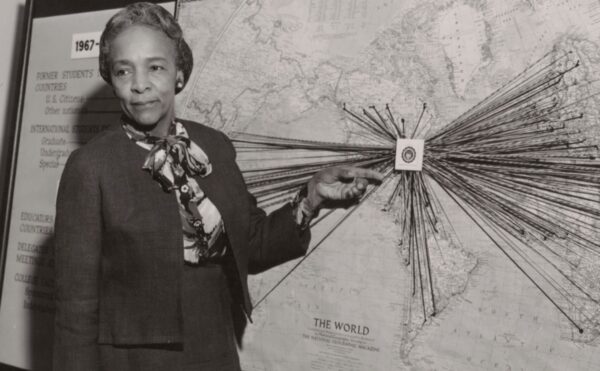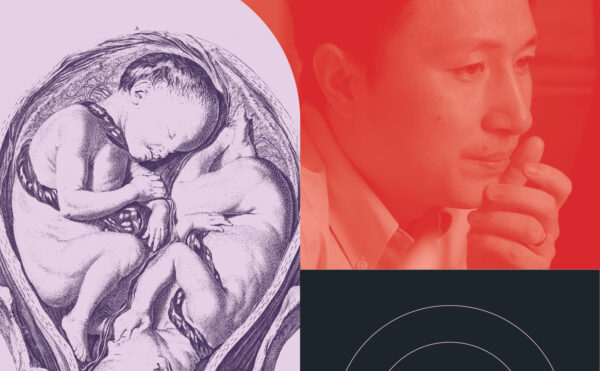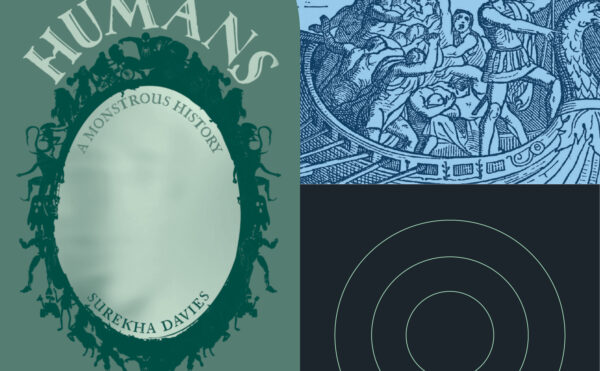The sports bra is omnipresent in today’s sports landscape. But the current iteration of this nifty item is less than 40 years old, and it arrived with a serendipitous origin story. For this episode we talked to Lisa Lindahl, an entrepreneur from Vermont, who in 1977 invented what was to become the modern-day sports bra. It’s a story about a runner who wanted running to be more comfortable. “It was the right product at the right time. It really struck a chord for so many women,” says Lindahl. “This product came into being because it was something I wanted.”
We also talked to our museum team about their new exhibition, Second Skin: The Science of Stretch, and the roles stretch fabrics play in health and sports. Christy Schneider, exhibits project manager at the Museum at CHF, says it’s all about getting the body you want, whether you want to dance all night or run a marathon. “How do you that?” asks Schneider. “You clothe it in a second skin.”
Credits
Hosts: Michal Meyer and Bob Kenworthy
Guests: Brandi Chastain, Lisa Lindahl, Gillian Maguire, and Christy Schneider
Reporter: Rigoberto Hernandez
Producer: Mariel Carr
Associate Producer: Rigoberto Hernandez
Audio Engineer: Seth G. Samuel
Music courtesy of the Audio Network
Transcript
Michal: Hello and welcome to Distillations, the science, culture, and history podcast. I’m Michal Meyer, a historian of science and editor of Distillations magazine, here at the Chemical Heritage Foundation.
Bob: And I’m Bob Kenworthy, CHF’s in-house chemist.
Michal: Today we’re telling you the unlikely story of an object that changed how women live their lives: the sports bra.
ACT 1: Brandi Chastain and the 1999 Women’s World Cup
Bob: But first let me take you back to a moment that I actually watched on television when it happened that forever changed American sports. The year is 1999. It’s a sunny July afternoon and 90,000 people are packed into the Rose Bowl in Pasadena California. Meanwhile another 40 million are at home watching the Women’s world cup final between The United States and China.
ABC commentator >> China sends their best player to the 12-yard spot: Sun Wen.
Bob: After drawing zero-zero during regular and extra times they go to penalty kicks. After a missed strike by the Chinese team the US is down to their last kick.
ABC commentator >> The USA could win the World Cup on this next kick. Chastain will take it. She missed a penalty kick against china in the Algarve cup and they lost that game.
Bob: That’s an ABC commentator. And he’s talking about Brandi Chastain, a veteran defender for the American team. Now one thing you have to understand, Michal, is how unlikely this moment was for Chastain. Here she is on Skype to talk about that moment:
Brandi Chastain >> We were on the sideline getting ready to go out to the middle for the kicks. There was a lot of commotion about who’s taking them. For the coaches, they’re trying to make the list. Just after that, a few minutes later our head coach Tony DiCicco came over to me and said, “Okay. You’re going to take a penalty?” He said, “Okay.
You’re going to take it with your left foot.” And he just kind of went away very quickly. The odd thing about that was I had never taken a penalty kick in a competition before. Every penalty kick I’ve taken was with my right. It’s amazing to think how quiet almost 100,000 people can be in a moment like that. It was as if everybody was holding their breath. That’s the final moment there’s going to be hopefully, a big cheer instead of a big “ugh!” you know. It was incredibly quiet as far as I remember.
Fox sports commentator >> GOAL!
Bob: What happened next is now legendary: Chastain takes off her shirt. And with her black sports bra exposed, she starts yelling at the top of her lungs as teammates run up to hug her.
Brandi Chastain >> As soon as it hit the net, everything became in fast motion. The celebration was an organic response to I guess a whole life spent training and playing, and I’ve always been a player who was very expressive on the field. And so I call it my little moment of insanity because you just don’t know how you’ll react to that moment until you’re in it.
Bob: The image of Chastain on her knees, shirt off, with her bra exposed made it to the cover of international magazines and newspapers. The New York Times even labeled it “the sports bra seen around the world.” It’s hard not to overstate how important this moment was not just for women’s sports, but for the sports bra. Those two actually go hand in hand, but more on that later. Meanwhile, to find out more we walked up one flight of stairs to talk to the museum staff here at the Chemical Heritage Foundation. They’ve been putting together an exhibition that includes an image of Chastain and they know just how important this moment was for women’s sports.
Gillian Maguire, CHF Museum Registrar >> This is the iconic photo of Brandi Chastain after she scored the game winning penalty kick in the 1999 Women’s World Cup final against China.
Bob: That’s Gillian Maguire, the museum registrar at the Chemical Heritage Foundation. She’s helping create an exhibition about stretch fabrics in sports and health. And recently she showed us some items which include an original version of the “Jogbra.”
Gillian Maguire >> This is definitely an iconic image of the sports bra as part of the history of the sports bra. To me, you can’t tell that history without this photo of Brandi Chastain.
Christy Schneider, CHF Exhibits Project Manager >> But the way that her mouth is so wide open and there’s just such pure elation and it’s so different from images we’re used to seeing of Victoria’s Secret bra ads where they’re staring at the camera or staring at the viewer that’s not there to sort be “sexy.”
Bob: That’s Christy Schneider, the exhibits project manager for the museum at the Chemical Heritage Foundation.”
Christy Schneider >> I mean this is just like, she’s got a job to do and that job is like showing elation.
ACT 2: Brief Early History of sports Bras
Bob: That moment of elation by Chastain highlights just one moment in the journey to create the modern sports bra. But there are other key moments in the history of the sports bra that changed how and even if women played sports. Michal, you looked at some of the history of the sports bra. Tell me what you found.
Michal: It’s a rich history. Basically women have been playing sports and dealing with this problem before there were sports bras.
>>Music<<
Michal: Let’s go back to the Romans. In Sicily there are Roman era mosaics depicting women exercising with bound breasts. Even the stoic Romans were not going to put up with the discomfort of bouncing breasts. Let’s jump forward to the Victorian era, to a Wimbledon tennis tournament in 1887. In between matches, the British teenager Lottie Dod would go to the dressing room and take off her bloodied corsets. The rigid stays stab her as she jumped…and twisted and turned. Now we’re in 1917 with Laura Blanche Lyon, who patents a back-fastened canvas camisole with cups. This might be the first sports bra. But from our perspective 1977 is the game changing year. That year, a group of friends designed the first modern sports bra.
Coincidentally, the bra and lingerie chain Victoria’s Secret is founded that year.
Lisa Lindahl, sports bra creator: Really, I have to say that I loved running but my upper torso, my breasts. I was not comfortable.
Michal: That is Lisa Lindahl, she’s an entrepreneur from Vermont. And the person who invented and patented what would become the modern day sports bra.
Lisa Lindahl >> My sister called me one day, and she had just started running. She said, “what do you do about…I am so uncomfortable. What do you do??” I said, “Well, I’m wearing a bra one-size too small.” And she said … It started out as a joke. She said, “Well, you know why there isn’t a jockstrap for women?” We laughed up furiously. We thought that was so funny. Then after the phone call I sat down and I said, “You know that isn’t such a silly idea. What would that need to do? What would a bra specifically for running need to do?” I sat down and said, “All right. The straps couldn’t fall off, because the bra straps stretch out and they slip off the shoulders. There couldn’t be any hardware that would dig in. It would have to deal with sweat well, and make the breast not move.” Because at that time I didn’t know that that was actually impossible.
Michal: And as with most origin stories there is a certain level of luck….or serendipity.
Lisa Lindahl >> My then husband took his jockstrap, turned it upside down and pulled it over his chest and jokingly said, “Hey, ladies. Here’s your jock bra. Hahaha.” We thought that was so funny, and I took it from him, and I pulled it over my chest and had this “ah-hah” moment, and looked at Polly and said, “You know what? This cold solve our engineering problems.
Michal: Polly Smith is her designer friend. Lisa told me that when they finally had a product they wanted it to be a tool, not an accessory.
Lisa Lindahl >> It was my marketing decision to put this product in sporting goods. Very clearly, it was not lingerie, the sports bra. It was athletic wear. We sold it in small, medium and large in sporting goods. When a woman went to buy her shoes, whether
she’s playing tennis, or running, or walking, or playing basketball, when she went to buy her shoes, she also needed to get a bra in sporting goods.
Bob: So how did that go?
Lisa Lindahl >> I had to convince all these sporting goods store guys to carry it, because I’d go in there and I’d say … I mean, I did a lot of cold calls. Do you want … I had never sold anything in my life, and I’m walking in there with my little suitcase full of bras saying, “Would you carry this bra in your store?” They’d go, “What? This is a sporting good store. I’m not going to carry a bra.” I’d look at them and say, “You sell jockstraps, don’t you? They’d go, “Oh.”
Michal: It worked.
Lisa Lindahl >> I was so naïve, I didn’t know that perhaps we should just open regionally first, so I put on sales reps across the country. We had sports bras, we had the jog bra in sporting good stores across the country very, very rapidly. We were profitable our first full year in business, and didn’t even know that that was unusual. It was the right product at the right time. It really struck accord for so many women. This product came into being, because it was something I wanted. It was literally I had a problem.”
Michal: And, as they say, the rest is history — But not all of it.
ACT 3: The tech and science behind the sports bra
Michal: Bob, you did some research about the technology and the science behind these synthetic fibers that allowed for the creation of the sports bra. And a lot of this technology was actually originally created by your old employer, DuPont.
Bob: Correct you are. Most of the sports bras and other sporting clothing are made are made with spandex, which DuPont invented in 1958 and trademarked as Lycra®.
Bob: The lycra polymer is composed of soft polyester and hard polyester and urethane components. They give the fiber stretch ability and natural integrity at the same time. The spandex fiber is generally knitted as a blend with cotton and other fibers to produce a fabric from which sports equipment is fabricated. So you really can’t tell the story of the modern sports bra without understanding how meaningful it was to develop these fibers and their development
ACt 4: Why is stretch fabric important
Bob: We talked to Gillian and Christy to find out more and they are showing us what we put together for the exhibition known as “Second Skin.” Which is what Christy?
Christy Schneider >> The main themes in this show are how you get the body you want or the body you need to do whatever it is you desire to do, run a marathon or just dance all night in some fabulous “panty boots.” How do you that? You clothe it in a “second
skin.” This exhibit will feature garments and textile devices that stretch and compress to fulfill our aspirations, needs, and shift our sense of self.
Gillian Maguire >> We always knew that we weren’t going to be able to tell the story of “second skin” and stretch without the history of the sports bra. That it’s just too important to the development of where we are now in stretch garments.
Bob: That last voice was Gillian, our Museum Registrar. I do want to point to an irony about the jockstrap, which led to the “Jogbra.” The jockstrap was developed for bike messengers riding over Boston’s cobblestone streets, and it was developed to protect their genitals.
Christy Schneider >> I was thinking about what you said, Gillian, about that it’s a feminist story and that it’s somewhat uncomfortable that it starts with the jockstrap. I have sometimes felt uncomfortable with … A lot of these histories are hard sometimes to read.
Bob: That’s Christy of the museum team, again.
Christy Schneider >> When I was looking up the women’s basketball as a game, my mom was like, “Oh, I always played that. It was half court and you could only dribble twice and it was boring and you had to pass a lot” or something. She’s like, “You didn’t play that?” I said, “No, I don’t think so.” Then I looked it up and there was a switch in the late ’60s where women would then play the male game.
Michal: But the game changer for women’s sports was the passage of Title IX in 1972. This federal law, whose full title is Title IX of the Educational Amendments of 1972, prohibits sex discrimination at any educational institution that takes government money. And it applies to the sports male and female students play and the sports scholarships they receive as well as to what they do in the classroom. It has helped even up the playing field for women playing sports.
Bob: And that brings us back to Brandi Chastain, who received a Title IX scholarship to play soccer at university, and her victory in 1999. Though she did get some flak for her now iconic Bra moment.
Gillian Maguire >> I think that was also one of the reasons for some of the controversy was the idea that she had planned this as part of some rogue marketing scheme that she was going to rip off her shirt and that it would advertise this bra which was not at all what happened.
Bob: Here’s Chastain again.
Brandi Chastain >> There was no way to plan for two regulation periods of tie game, two overtime periods of a tie game, going to penalty kicks and getting to be the last kicker. You don’t plan for that. You don’t even think about that. There was absolutely no planning of that moment.
Michal: Despite this incredible experience, Brandi chastain would wear that laundry day when she didn’t have anything to wear. Although these days she keeps it in a plastic case in her house.
ACT 5: Conclusion
Michal: Sports bras have gone on to become big business for corporations—sporting good companies like Nike and Under Armor have seen their sales in women’s sports equipment double during the past five years.
Bob: It has coincided with an increase in girls playing soccer in American where more than any other sport. It is likely that the sports bra had an impact on this since studies have shown that breast discomfort is a leading reason women stop participating in sports.
Michal: And just to show we went to our closes Macy’s and they have out on display in the lingerie and sports sections, which is quite a change from back in the day when Lisa Lindahl had a hard time finding people who would be willing to display her sports bras. This podcast was very much about rediscovering that I had always taken for granted that women did always want to have bras that did what they wanted them to do whether it was sports or whatever. To discover that it was a recent object was quite a surprise.
Bob: and for me look at the difference now how a sports bra is used vs. 1999. When Brandi Chastain created a sensation by wearing her sports bras. Now you see women everyday wearing them as outer garments.
Michal: For Distillations I am Michal Meyer.
Bob: And I am Bob Kenworthy. Thanks for listening!




